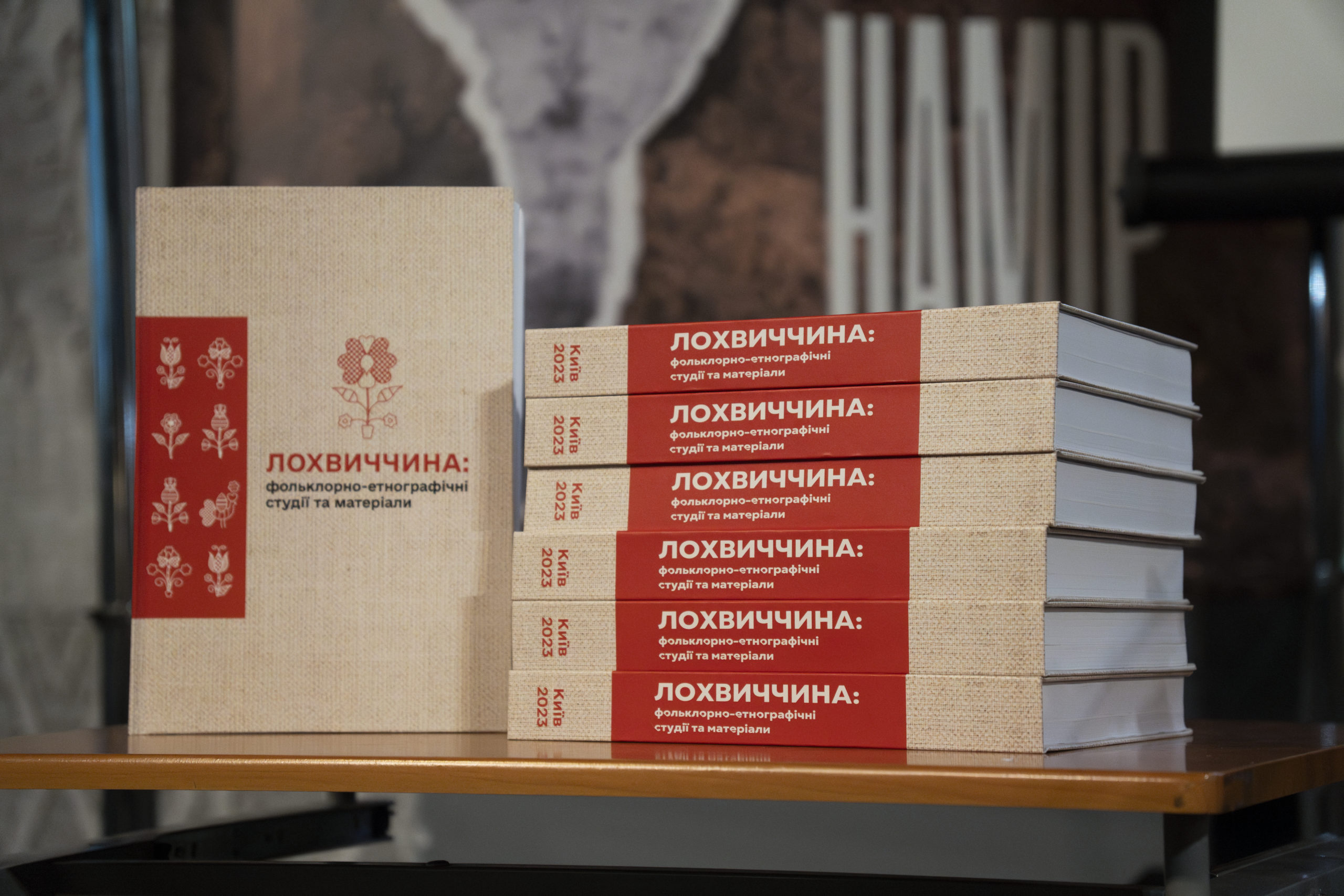A scientific publication about the Lokhvytsia region presented in the Museum
On 5 December, the presentation of the scientific publication “The Lokhvytsia region: folklore and ethnographic studies and materials” was held at the Holodomor Museum. The book was prepared based on the results of an expedition to the region, conducted in 2020 by the public organisation My Province, together with scholars from Rylsky Institute of Art Studies, Folklore and Ethnology. As part of the presentation, the materials collected during the expedition were handed over to the Holodomor Museum, with which the NGO “My Province” concluded a Memorandum of Cooperation.
The Acting Director General of the museum, Lesia Hasydzhak, emphasised the importance of such research. After all, at one time, it was during similar initiatives that extremely valuable testimonies of Holodomor eyewitnesses were collected, which are now part of our museum collection. “Today’s transfer of materials is a gift for us and an example for others, how you can and should research the history of your region,” Lesia Hasydzhak said.
As the ideological inspirer of the project, the head of the NGO “My Province,” Yanina Aleeva, said her family comes from Lokhvytsia, and her grandfathers and great-grandfathers experienced all the troubles that the last century generously granted with to Ukrainians.”And at some point I wanted to search: who am I? – Ms Yanina says. – Throughout its history, Ukraine has been forced to fight for its identity. Regretfully, we ourselves often cannot explain what our identity is, although we feel our deep, unique, ancient roots. It was in search of the identity of a separate region, the fixation of its unique historical and cultural heritage of the past and present that we explored the Lokhvytsia region, one of the least studied regions of the Poltava region from the point of view of ethnography. At the same time, the Holodomor became one of the central events that sharply turned the life of the region around and changed its identity. This period of the region’s life has been little studied. For instance, according to official data, only 9 people died in Lohvytsia during the Holodomor. And this is in a city of 13,000 people! For me, as a person whose family survived the Holodomor, it was a challenge, a matter of honour. After all, dozens of victims are not counted and not properly honoured.”
As a result, by communicating with residents of Lohvytsia, searchers managed to locate three mass burials of Holodomor victims in the city. Dozens of testimonies were also recorded – both Holodomor eyewitnesses and their descendants. These interviews were also included in the book “The Lokhvytsia region: folklore and ethnographic studies and materials” as evidence of the historical memory of the region.
The presentation of the book was attended by guests from the Lokhvytsia region: Yaroslav Kabar, temporary acting head of the culture, youth and sports department of the Lokhvytsia territorial community; Natalia Stepanenko, director of the Lokhvytsia Museum of Local Lore; Larysa Yakovenko, head of the Kharkivtsi Literary and Memorial Museum named after Arkhip Teslenka; They shared their own family stories and memories of the Holodomor residents of Lohvytsia.
During the event, everyone had the opportunity to view the exhibition of artefacts from the Poltava region, which are in our museum funds.
The presentation literally ended on a high note – with the performances of Liudmyla Kolisnyk, a performer from Lohvychyna, and the band “Shumya” from Kyiv, who impressed the event participants with their performance of authentic songs from the Lohvytsia region.
To buy the book “The Lokhvytsia region: folklore and ethnographic studies and materials”, please follow the link.
Photo – Serhii Okuniev.
